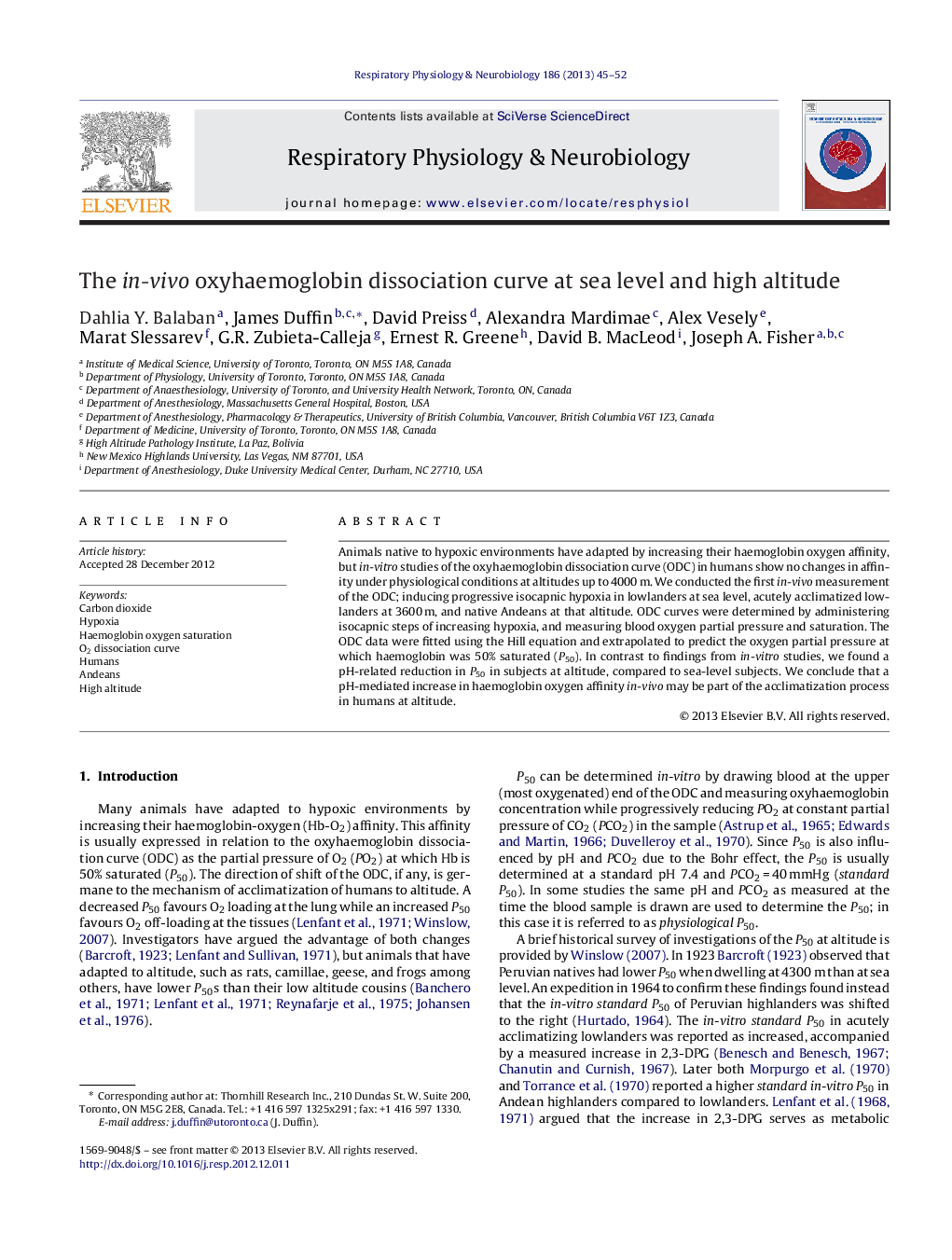| کد مقاله | کد نشریه | سال انتشار | مقاله انگلیسی | نسخه تمام متن |
|---|---|---|---|---|
| 5926161 | 1167341 | 2013 | 8 صفحه PDF | دانلود رایگان |

Animals native to hypoxic environments have adapted by increasing their haemoglobin oxygen affinity, but in-vitro studies of the oxyhaemoglobin dissociation curve (ODC) in humans show no changes in affinity under physiological conditions at altitudes up to 4000Â m. We conducted the first in-vivo measurement of the ODC; inducing progressive isocapnic hypoxia in lowlanders at sea level, acutely acclimatized lowlanders at 3600Â m, and native Andeans at that altitude. ODC curves were determined by administering isocapnic steps of increasing hypoxia, and measuring blood oxygen partial pressure and saturation. The ODC data were fitted using the Hill equation and extrapolated to predict the oxygen partial pressure at which haemoglobin was 50% saturated (P50). In contrast to findings from in-vitro studies, we found a pH-related reduction in P50 in subjects at altitude, compared to sea-level subjects. We conclude that a pH-mediated increase in haemoglobin oxygen affinity in-vivo may be part of the acclimatization process in humans at altitude.
⺠We describe the first in-vivo measurement of the O2 dissociation curves. ⺠High altitude residents have O2 dissociation curves that are shifted to the left. ⺠Blood pH was sufficient to account for the shift of the O2 dissociation curves. ⺠A mathematical model predicted the O2 dissociation curves from the subjects' pH.
Journal: Respiratory Physiology & Neurobiology - Volume 186, Issue 1, 1 March 2013, Pages 45-52